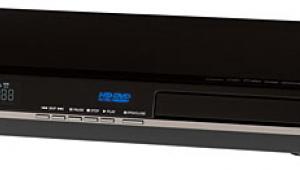TiVo Premiere DVR
Has TiVo Reinvented TV Again?

What started as Jim Barton and Mike Ramsay’s idea in 1997 became a reality in 1999 when TiVo burst on the scene and changed the way people watch TV. While time-shifting programs had been around for years via VCR, you couldn’t pause live TV, watch one program while recording another, or view a comprehensive program guide at the push of a button. The cable and satellite companies took their sweet time entering the DVR market, and TiVo’s only other competitor—ReplayTV—was absorbed by DIRECTV. TiVo became so popular, its brand name became a verb.
Over the past 11 years, TiVo’s DVRs have undergone various upgrades from single-tuner boxes to dual-tuner models. In 2006, the company launched its first HDTV-compatible box, the Series3, which included CableCARD support and an ATSC tuner. A couple of years later, the Series3 evolved into the cheaper TiVo HD and the TiVo HD XL, which offered more hard-drive capacity at a lower cost. One thing that has remained constant over the years is TiVo’s interface. It started in the standard-definition world and looks so last century. Enter the TiVo Premiere ($299), a Series4 DVR with improved hardware, Internet-driven search capability, and a much-needed user interface upgrade. Is this newest iteration of the TiVo experience worth the upfront cost of the box plus a monthly subscription? Read on and see…
Slim Is In
Like the popular Sony PlayStation 3, the TiVo Premiere has slimmed down from the previous generation. It’s nearly 1 inch shorter and 2.6 inches shallower than the TiVo HD. The all-black unit isn’t a looker. Its sparse front panel sports a silver TiVo logo, five LED indicator lights, and a format button that changes the output resolution. One of my favorite features from the TiVo Series3 I own is the front-panel OLED display, which shows the time and any shows that are currently recording. It’s a bummer that the Premiere doesn’t have the same external clock; the only indication that it’s recording is a red LED (or two). There’s no way to know what the unit is recording unless you turn on your HDTV.
The rear panel includes a detachable power cord and two RF coaxial inputs—one for cable and the other for an over-the-air antenna. Unlike cable boxes, the TiVo will record from both cable and OTA sources. There’s also an Ethernet port, two USB inputs, an eSATA port for expanding the recording capacity with an external hard drive, and a single multi-stream CableCARD slot. Video connections include HDMI (1.3), component video, and composite video output, with both TosLink and stereo analog audio. TiVo claims that the Premiere will record, play back, and fast-forward cable 3D broadcasts properly, when connected via HDMI 1.3 to a 3D-capable HDTV, but we did not test this capability.
 The Premiere requires an Internet connection and comes with an Ethernet port. If you need to connect to your home network using Wi-Fi, TiVo sells an 802.11n adapter for $90 or an older 802.11g version for $60.
The Premiere requires an Internet connection and comes with an Ethernet port. If you need to connect to your home network using Wi-Fi, TiVo sells an 802.11n adapter for $90 or an older 802.11g version for $60.
The hardware sports a 400megahertz dual-core processor (only one core is active at this time for stability reasons). There’s also 512 megabytes of RAM and a 320-gigabyte (45 HD hours) hard drive for the base unit (reviewed here) or a 1-terabyte (150 HD hours) drive in the THX-certified Premiere XL ($500). The beefed-up hardware supports the new Flash-based high-definition interface and enables faster network transfers. Like the Series3, the Premiere supports dual tuners, so you can record two shows simultaneously while you watch a third previously recorded program or use one of its many streaming services.
Where’s the Remote?
The Premiere’s remote is a step down from my Series3 TiVo’s Glo remote. It’s lighter, and I really miss having a backlight in a darkened room. The Premiere XL does include a backlit remote, so if you don’t have a universal remote, it would be an extra benefit in addition to the XL’s larger hard drive. TiVo plans to release an aftermarket QWERTY remote that will make it less clickintensive to search for programs. It will include a small Bluetooth USB dongle to control the TiVo, plus IR support for your other equipment. Pretty slick; I just wish it were included with the Premiere.
Setup and Install
If you plan to use a CableCARD, you must arrange a trip to your cable company’s local office. In some cases, your provider may require a truck roll to install one. Fortunately, my local Comcast affiliate let me install mine, and I didn’t have to waste half a day waiting for the cable guy to arrive—never a fun way to spend an afternoon.





























































